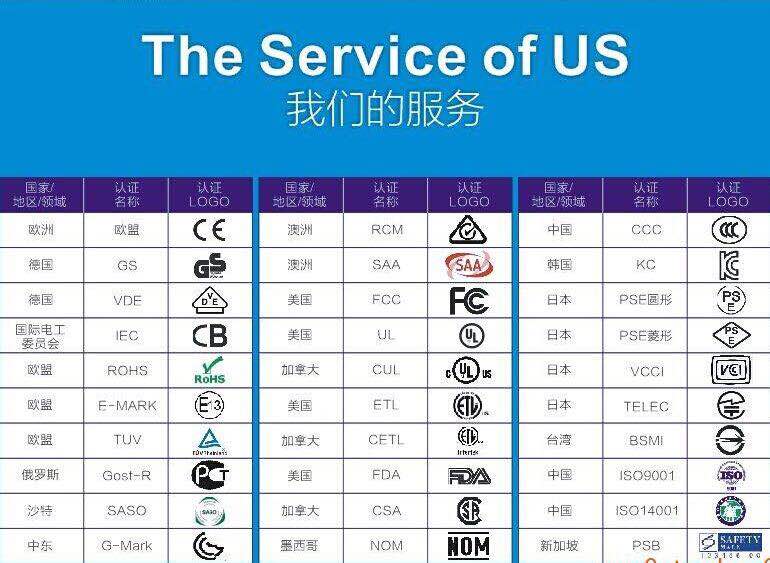【专题】RED指令EN 301 489 -52测试要求
ETSI EN 301 489 -52是欧盟针对蜂窝通讯移动、手持、辅助设备的测试标准,目前欧盟发布RED指令下该标准**终的草案EN 301489-52 V1.1.0, 该标准涵盖了GSM/UTRA/E-UTRA的EMC测试,预计在不久之后将正式发布,替代原来RTTE指令中的EN301489-7/-24,两者之间有一定的差异,主要差异内容如下:
u 第2.1章节,引用标准由原来ETSI EN 301 489-1 (V.1.8.1)变更为ETSI EN 301 489-1 (V2.1.1) (11-2016);
Ü The following referenced documents are necessary for the application of the present document.
[1] ETSI EN 301 489-1 (V2.1.1) (11-2016): "ElectroMagnetic Compatibility (EMC) standard for radio equipment and services; Part 1: Common technical requirements: Harmonised Standard covering the essential requirements of article 3.1(b) of the Directive 2014/53/EU and Harmonised Standard covering the essential requirements of article 6 of the Directive 2014/30/EU".
u 第4.3节中的豁免频段不同
|
Exclusion bands |
EN301489-52 |
EN301489-7 |
EN301489-24 |
|
ink10" style="color: rgb(109, 108, 108);">ink9" style="color: rgb(109, 108, 108);">GSM and DCS Receiver and receivers of duplex transceivers: As defined in clause 4.3.3 of ETSI EN 301 489-1 [1] where n=1 and Channel Width is 200 kHz. |
GSM and DCS Receiver and receivers of duplex transceivers: The lower frequency of the exclusion band is the lower frequency of the receive band of the EUT minus 6 % of that frequency; The upper frequency of the exclusion band is the upper frequency of the receive band of the EUT plus 5 % of that frequency. |
||
|
GSM and DCS Transmitter:The exclusion band for transmitters is as defined in clause 4.3.2.2 of ETSI EN 301 489-1 [1] 250 % of the channel width either side of the nominal operating frequency of the transmitter. |
GSM and DCS Transmitter: The upper frequency of the exclusion band is the upper frequency of the receive band of the EUT plus 5 % of that frequency. |
UTRA Transmitter: 1. FDD bands I, III, VII, VIII Carrier Frequency ± 12,5 MHz. 2. TDD Option 3,84 Mcps Carrier Frequency ± 12,5 MHz. 3. TDD Option 1,28 Mcps Carrier Frequency ± 4,0 MHz. 4. TDD Option 7,68 Mcps Carrier Frequency ± 25,0 MHz. |
|
|
ink2" style="color: rgb(109, 108, 108);">ink1" style="color: rgb(109, 108, 108);">CDMA Direct Spread (UTRA and E-UTRA ) ink12" style="color: rgb(109, 108, 108);">ink11" style="color: rgb(109, 108, 108);">Transmitter: For the purpose of EMC specifications the transmitter exclusion band this shall be as defined in clause 4.3.2.2 of ETSI EN 301 489-1 [1] where BWChannel is the channel bandwidth as defined in ETSI TS 136 101 [9].. |
E-UTRA Transmitter: Lower carrier frequency used - 2,5 × BWChannel MHz to upper carrier frequency used + 2,5 × BWChannel MHz, where BWChannel is the channel bandwidth as defined in TS 136 101 [13]. |
||
|
ink14" style="color: rgb(109, 108, 108);">ink13" style="color: rgb(109, 108, 108);">CDMA Direct Spread (UTRA and E-UTRA) Receiver: As defined in clause 4.3.3 of ETSI EN 301 489-1 [1] where n=1 and Channel Width is as follows:1. UTRA Channel Width 5 MHz;2. E-UTRA Channel Width 20 MHz(For systems that support multiple channel widths the Channel Width used should be the widest support by the EUT.) |
CDMA Direct Spread (UTRA and E-UTRA) Receiver: The receiver exclusion band for terminals extends from the lower frequency of the allocated receiver band minus 85 MHz to the upper frequency of the allocated receiver band plus 85 MHz. The exclusions bands are as set out in clause 4.3.2.1 (except for FDD Band VII, where the exclusion band begins 50 MHz below the receiver band edge). |
Ü EN301489-1 V2.1.1版本中的豁免频段也变成
手机部分主要增对Channelized Equipment
Ø Transmitter:For channelized equipment the exclusion band shall extend 250 % of the channel width either side of the transmitter centre frequency.
Ø NOTE: Exclusion band of 250 % is based on the ITU Radio Regulations [i.8], as the boundary between OOB and Spurious Domain.
Ø Receiver:
For channelized equipment the exclusion band shall be calculated by using the following formulae:
For the lower edge for the exclusion band:
EXband(lower) = BandRX(lower) – nChWRX
For the upper edge of the exclusion band:
EXband(upper) = BandRX(upper) + nChWRX
For equipment that support multiple channel widths the Channel Width used should be the widest support by the EUT.Where the present document is being used in a stand-alone basis (i.e. with no reference to other relevant radio technology parts of ETSI EN 301 489 series [i.13]), the value of n shall be 1.


